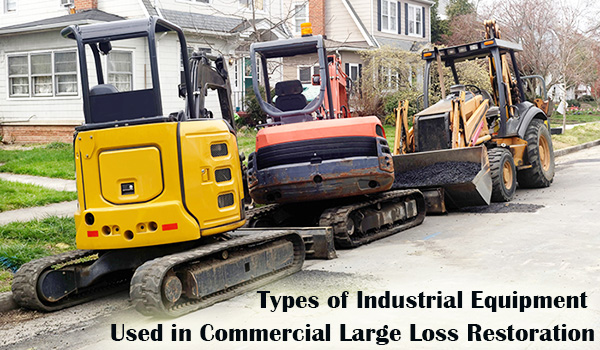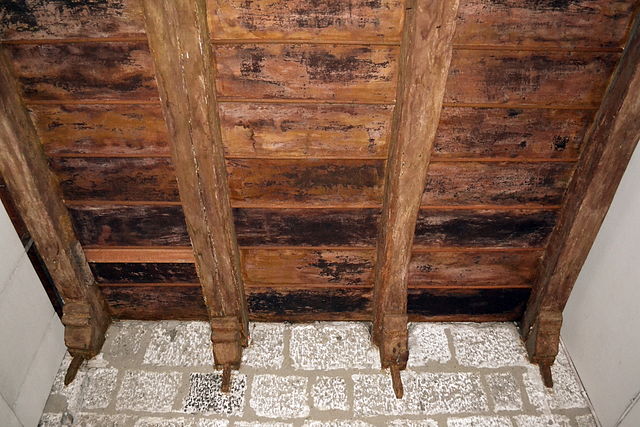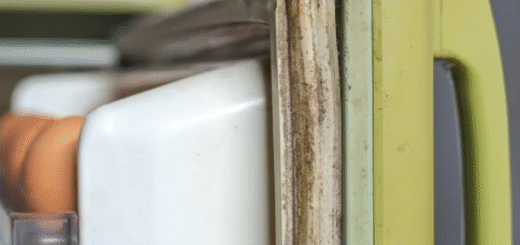Finding Black Mold in Your Shower: What to Do
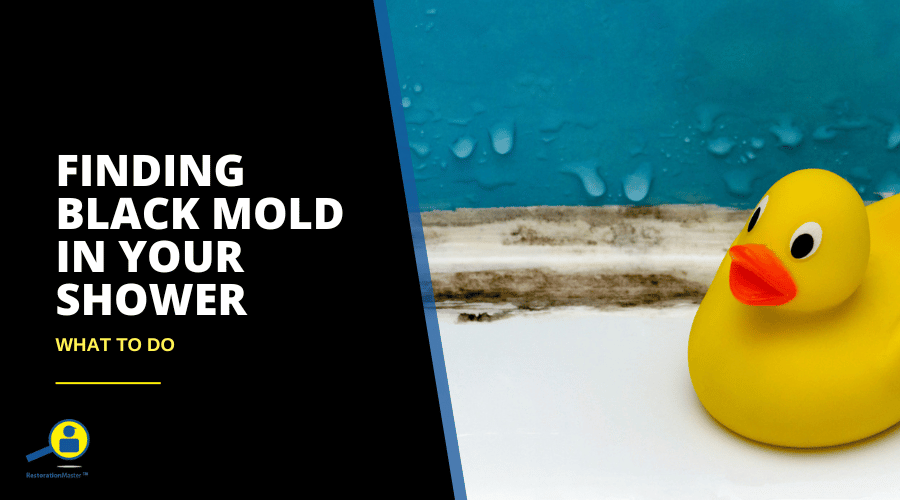
Taking a shower can be one of the most relaxing times of the day; however, it may not be so relaxing if you notice moldMold is a type of fungus that grows in damp or humid conditi... More growing on the walls! While it appears in little black spots, be careful to avoid touching it. As it may contain harmful bacteria, you should take care of this problem right away before it gets worse.
Although black moldMold is a type of fungus that grows in damp or humid conditi... More is not the most common type of indoor moldMold is a type of fungus that grows in damp or humid conditi... More, it is not rare to find it in moist, dark places, such as a shower stall. It is also one of the most dangerous types as it can pose a major threat to the health of you and others living in the home.
What is Black Mold?
While black moldMold is a type of fungus that grows in damp or humid conditi... More can come in many different shapes and sizes, it appears to be a greenish-black, growing in warm, moist conditions. It also thrives in areas that are not frequently cleaned. Be sure to keep this in mind when spring cleaning comes around! Water damage as well as leaks also harbor great environments for moldMold is a type of fungus that grows in damp or humid conditi... More to thrive. As long as there is a significant source of water in the area, it remains a possibility for moldMold is a type of fungus that grows in damp or humid conditi... More to grow.
As many types of moldMold is a type of fungus that grows in damp or humid conditi... More release their sporesSpores are microscopic reproductive units of fungi or mold t... More when disturbed, black moldMold is a type of fungus that grows in damp or humid conditi... More is similar. It will also disperse a number of health-threatening substances called microtoxins that are poisonous to humans. So if you or someone you know has come into contact with these toxins, be sure to be aware of the following symptoms:
- Strong allergy problems including water and itchy eyes, sneezing, coughing, and a runny nose
- Lung infections
- Memory loss
- Mold-induced asthma
- Headaches
- Nausea
- Skin irritation
- Respiratory issues
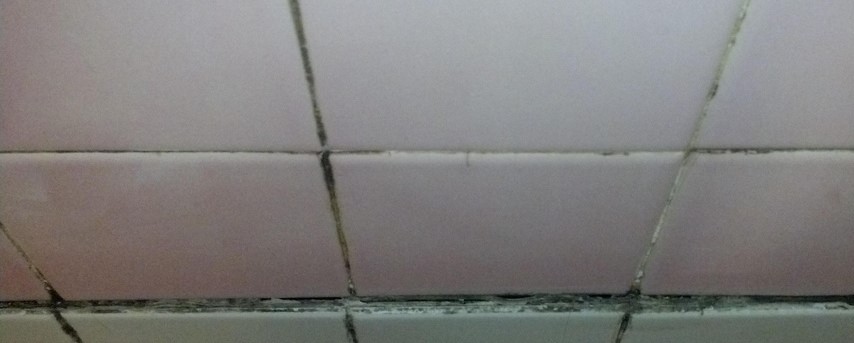
MoldMold is a type of fungus that grows in damp or humid conditi... More on Tiles in the Shower
What to do when I find black mold in the shower?
Discovering black moldMold is a type of fungus that grows in damp or humid conditi... More in your shower can be concerning, but with the right approach, you can address the issue effectively and safely. Here’s a step-by-step guide to help you manage the situation:
Step 1: Assess the Situation
Before taking any action, carefully inspect the area where you found the black moldMold is a type of fungus that grows in damp or humid conditi... More. Look for any signs of extensive growth or damage. If the moldMold is a type of fungus that grows in damp or humid conditi... More appears to be widespread or you suspect it has penetrated deeper materials (such as drywall), it may be best to consult a professional mold remediationMold remediation is the process of identifying, removing, an... More specialist.
Step 2: Gather Your Supplies
If the moldMold is a type of fungus that grows in damp or humid conditi... More is limited to surface areas, you can tackle it yourself. Gather the following supplies:
- Protective gear (gloves, mask, and goggles)
- A moldMold is a type of fungus that grows in damp or humid conditi... More remover or a bleach solutionA solution is a homogeneous mixture of two or more substance... More (1 cup of bleach mixed with 1 gallon of water)
- Scrub brush or spongeA sponge is a porous material used to absorb liquids or clea... More
- Spray bottle
- Plastic bags for disposal of contaminated materials
Step 3: Ventilate the Area
Ensure the bathroom is well-ventilated before you begin cleaning. Open windows and turn on the exhaust fan to minimize exposure to moldMold is a type of fungus that grows in damp or humid conditi... More sporesSpores are microscopic reproductive units of fungi or mold t... More and fumes from the cleaning solutions you’ll be using.
Step 4: Apply the Cleaning Solution
Using your spray bottle, apply the moldMold is a type of fungus that grows in damp or humid conditi... More remover or bleach solutionA solution is a homogeneous mixture of two or more substance... More directly onto the affected areas. Let it sit for about 10-15 minutes to penetrate and kill the moldMold is a type of fungus that grows in damp or humid conditi... More.
Step 5: Scrub the Mold Away
After letting the cleaning solutionA solution is a homogeneous mixture of two or more substance... More sit, use a scrub brush or spongeA sponge is a porous material used to absorb liquids or clea... More to scrub the affected areas thoroughly. Make sure to wear gloves and a mask during this process to protect yourself from moldMold is a type of fungus that grows in damp or humid conditi... More sporesSpores are microscopic reproductive units of fungi or mold t... More and harsh chemicals.
Step 6: Rinse and Dry
Once you’ve scrubbed the area, rinse it with warm water to remove any residueResidue is any leftover material, such as soot, dust, or che... More of the cleaning solutionA solution is a homogeneous mixture of two or more substance... More. Then, dry the area completely using a towel or cloth. This step is crucial to prevent the moldMold is a type of fungus that grows in damp or humid conditi... More from returning.
Step 7: Dispose of Contaminated Materials
Place any sponges, cloths, or other materials that came into contact with the moldMold is a type of fungus that grows in damp or humid conditi... More into plastic bags and seal them tightly. Dispose of these bags in an outdoor trash bin to prevent the spread of moldMold is a type of fungus that grows in damp or humid conditi... More sporesSpores are microscopic reproductive units of fungi or mold t... More indoors.
Step 8: Monitor and Maintain
After cleaning, keep an eye on the previously affected area for any signs of moldMold is a type of fungus that grows in damp or humid conditi... More returning. Implement preventative measures such as:
- Regularly using an exhaust fan while showering
- Keeping the bathroom dry by wiping down surfaces post-shower
- Ensuring adequate ventilationVentilation is the process of exchanging or circulating air ... More by opening windows when possible
If the moldMold is a type of fungus that grows in damp or humid conditi... More returns or if you have concerns about hidden moldMold is a type of fungus that grows in damp or humid conditi... More growth, do not hesitate to contact a certified mold remediationMold remediation is the process of identifying, removing, an... More specialist for a thorough evaluation and remediation plan.
Calling the Professionals
If you are unsure if the moldMold is a type of fungus that grows in damp or humid conditi... More can be taken care of by yourself, call a licensed mold remediationMold remediation is the process of identifying, removing, an... More service. The mold removal professionals have professional equipment and years of experience in order to effectively remediate all cases of moldMold is a type of fungus that grows in damp or humid conditi... More.
In certain situations, it can be hard to determine exactly what kind of moldMold is a type of fungus that grows in damp or humid conditi... More you have just by looking at it. Even if you are not experiencing many of the symptoms listed above, be sure to contact the professionals anyway as it could leadLead is a heavy metal that can be toxic to humans, especiall... More to a bigger problem in the future. As all types of molds pose threats to your health in different ways, they can also severely damage the structural composition of your property.

What causes black mold in shower?
Understanding the causes of black moldMold is a type of fungus that grows in damp or humid conditi... More growth is crucial for effective moldMold is a type of fungus that grows in damp or humid conditi... More preventionPrevention refers to actions taken to reduce the likelihood ... More and remediation. Here are some of the main factors that contribute to the development of black moldMold is a type of fungus that grows in damp or humid conditi... More in your shower:
Leakages:
One of the most significant contributors to black moldMold is a type of fungus that grows in damp or humid conditi... More is water leakage. Even a small leak from cracked tiles, broken caulking, or loose grout can create a damp environment that is ideal for moldMold is a type of fungus that grows in damp or humid conditi... More to thrive. Over time, these leaks can leadLead is a heavy metal that can be toxic to humans, especiall... More to significant moisture accumulation, making it easier for moldMold is a type of fungus that grows in damp or humid conditi... More sporesSpores are microscopic reproductive units of fungi or mold t... More to settle and grow.
Poor Ventilation:
Bathrooms are often susceptible to high humidityHumidity is the amount of moisture or water vapor present in... More, especially during long, hot showers. If your bathroom lacks proper ventilationVentilation is the process of exchanging or circulating air ... More, the moist air can linger, creating a perfect breeding ground for moldMold is a type of fungus that grows in damp or humid conditi... More. Installing exhaust fans or ensuring windows are opened during and after showers can help reduce humidityHumidity is the amount of moisture or water vapor present in... More levels and mitigateTo mitigate is to reduce or limit the severity of damage, ri... More moldMold is a type of fungus that grows in damp or humid conditi... More growth.
Water Damage:
Previous water damage incidents, such as floodingFlooding is the overflow or accumulation of water in areas t... More or plumbing issues, can leadLead is a heavy metal that can be toxic to humans, especiall... More to moldMold is a type of fungus that grows in damp or humid conditi... More growth if not addressed promptly. If your home has experienced water damage, it’s essential to thoroughly inspect and dry out affected areas to prevent moldMold is a type of fungus that grows in damp or humid conditi... More resurgence.
Dampness:
General dampness in the bathroom can significantly increase moldMold is a type of fungus that grows in damp or humid conditi... More growth risk. Factors such as insufficient air circulation, condensation from hot water, or even wet towels left in the bathroom can contribute to a persistently damp environment. Keeping surfaces dry and utilizing dehumidifiers can help combat this problem.
Lack of Cleaning:
Regular cleaning is vital to preventing moldMold is a type of fungus that grows in damp or humid conditi... More buildup. If you neglect to clean your shower and bathroom regularly, soap scum, dirt, and moisture can accumulate, providing an inviting environment for moldMold is a type of fungus that grows in damp or humid conditi... More sporesSpores are microscopic reproductive units of fungi or mold t... More. Establishing a routine cleaningRoutine cleaning is the regular cleaning performed to mainta... More schedule can help keep moldMold is a type of fungus that grows in damp or humid conditi... More at bay and ensure a healthier living space.
Where Does Mold Form in a Bathroom?
MoldMold is a type of fungus that grows in damp or humid conditi... More thrives in environments that are damp, dark, and poorly ventilated, making bathrooms a prime location for its growth. Here are the most common areas within a bathroom where moldMold is a type of fungus that grows in damp or humid conditi... More is likely to establish itself:
- Shower and Tub Areas: The shower and bathtub are often the main sources of moisture in a bathroom. The corners where tiles meet can trap water, creating a perfect breeding ground for moldMold is a type of fungus that grows in damp or humid conditi... More. Additionally, grout lines are particularly vulnerable because they can retain moisture and provide a porousPorous describes a material that contains small openings or ... More surface for moldMold is a type of fungus that grows in damp or humid conditi... More to latch onto.
- Ceilings: The ceiling of the bathroom, especially in areas that are frequently exposed to steam from hot showers, can develop moldMold is a type of fungus that grows in damp or humid conditi... More if there is inadequate ventilationVentilation is the process of exchanging or circulating air ... More. The accumulation of moisture in the air can condense on cooler surfaces, leading to moldMold is a type of fungus that grows in damp or humid conditi... More growth in these regions.
- Walls: Walls that are frequently splashed with water or are located near the shower or sink are susceptible to moldMold is a type of fungus that grows in damp or humid conditi... More. Paint or wallpaper may provide a surface that retains moisture, which can exacerbate the growth of moldMold is a type of fungus that grows in damp or humid conditi... More sporesSpores are microscopic reproductive units of fungi or mold t... More.
- Windowsills: If your bathroom has windows, the sills can be a hotspot for moldMold is a type of fungus that grows in damp or humid conditi... More. Condensation often builds up on these surfaces, particularly in humid conditions, creating an opportunity for moldMold is a type of fungus that grows in damp or humid conditi... More to thrive.
- Toilet Areas: MoldMold is a type of fungus that grows in damp or humid conditi... More can also develop in and around toilets, particularly under the rim or in the tank, where moisture levels can be consistently high. The humid environment combined with organic materialsOrganic materials are derived from living organisms, such as... More can leadLead is a heavy metal that can be toxic to humans, especiall... More to the growth of black moldMold is a type of fungus that grows in damp or humid conditi... More.
- Floors: Floors, especially those made of tile or other non-porous materials, can accumulate moisture from spills and splashes. MoldMold is a type of fungus that grows in damp or humid conditi... More may grow in corners or under mats that remain damp or wet for extended periods.
- Shower Curtains and Liners: The fabric of shower curtains and liners can collect moisture and, if not cleaned regularly, can quickly become a breeding ground for moldMold is a type of fungus that grows in damp or humid conditi... More.
Preventing Mold From Growing in the Shower Stall
Although it is impossible to completely prevent moldMold is a type of fungus that grows in damp or humid conditi... More from growing anywhere, there are a number of steps you can take in order to significantly reduce its’ chances:
- Use proper air circulation in your bathroom, especially when showering
- Turn on the vent, fan, or air conditioner before stepping into the shower. Allow the air to circulate for at least 30 minutes afterwards to ensure that all moisture has dried properly.
- Use moisture-resistant shower and window curtains.
- If your shower curtain is made of cloth, wash it frequently.
- Do not leave damp towels or clothes lying on the floor.
- Clean the shower stall properly after each use to remove any remaining moisture/mildew.
- Fix any leaking pipes, shower heads, and pipes.
If you find black moldMold is a type of fungus that grows in damp or humid conditi... More anywhere in your home, be sure to call a professional moldMold is a type of fungus that grows in damp or humid conditi... More removal service such as RestorationMaster. Specializing in disaster restoration and cleaning services, these technicians are available 24/7 to test and eradicate all cases of moldMold is a type of fungus that grows in damp or humid conditi... More within the home. In addition to their ongoing training, they will arrive prepared in personal protection equipment (PPE) and with powerful cleaning products to eliminate even the biggest moldMold is a type of fungus that grows in damp or humid conditi... More outbreaks. Finally, you can count on our services in order to remove all moldMold is a type of fungus that grows in damp or humid conditi... More in your home and put your mind at ease once more when taking a shower.










